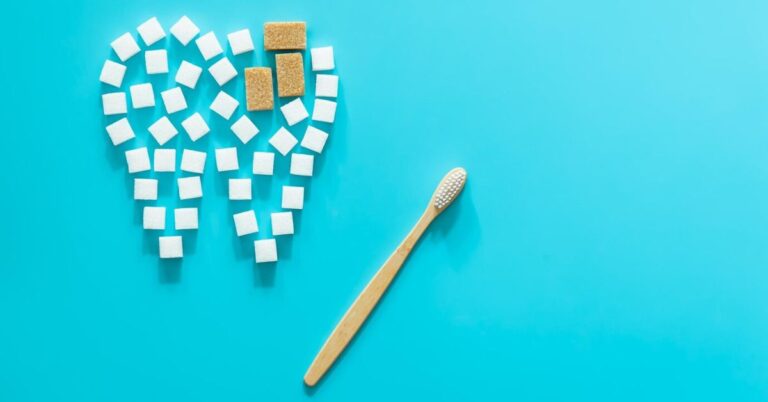There are many kinds of misalignment that require attention and treatment. People tend to ignore the treatment and later suffer the consequences and associated medical conditions.
These misalignments are one of the major reasons that cause temporomandibular joint issues and make patients feel socially conscious and have low self-esteem. It’s very important to understand the degree of misalignment and choose the correct treatment.
This blog is a simple guide for all those who are suffering from misalignments like Crossbite and who want to get it corrected through dental treatment.
What is Crossbite?
In normal conditions, the upper jaw or maxillary teeth overlap the lower teeth up to an extent. This much overlap is said to be normal. But if this overlap is misaligned, that means the upper teeth go behind the lower teeth after biting then this condition is called Crossbite.
Crossbite is necessary to treat because if left untreated, it can cause severe jaw pain, teeth wear and tear, and other dental health issues.
How to identify if you have Crossbite?
Self-Assessment in Mirror: Have a closer look in the mirror to see how your upper teeth align with your lower teeth.
Check the Overlap: If the maxillary teeth do not overlap the lower teeth, instead, lower teeth overlap the front upper teeth then very likely you may have crossbite.
Side Profile Check: You may notice the lower lips are a little bit protruded and the upper jaws look recessed, this may indicate a crossbite.
Discomfort: Frequent jaw pain, difficulty biting, excessive tooth wear or abrasion are some of the reasons that may arise because of crossbite.
Other symptoms of Overbite:
Speech Issues
Cavities
Abrasion
Breathing Issues
Temporomandibular Joint Disorder
Causes of Crossbite:
Genetic Factoy of dental issues can contribute.
Natural jaw size or shape differences inherited from parents.
Jaw Abnormalities:
Skeletal crossbite: Caused by discrepancies in the size or position of the upper and lower jaw (e.g., a narrower upper jaw or a wider lower jaw).
Dental crossbite: Due to misalignment of individual teeth, often without skeletal issues.
Tooth Development Issues:
Ectopic eruption: Teeth erupt in the wrong position.
Crowding or spacing issues: Overlapping or gaps between teeth can force improper alignment.
Thumb Sucking or Pacifier Use (in children):
Prolonged habits can push the front teeth out of alignment.
Early Tooth Loss:
Losing baby teeth too early can cause adjacent teeth to shift into the wrong position.
Trauma or Injury:
Impact on the jaw or face can alter tooth alignment.
How are crossbite, overbite and overjet different from each other?
Overjet, overbite and crossbite are different forms of malocclusion. Despite having similar names, these malocclusions are very different from each other and affect the dentition in separate ways.
Crossbite is the wrong overlapping of lower teeth over upper teeth.
Overjet means misalignment in a horizontal direction. The top teeth protrude (stick out) ahead of the lower front teeth. This is sometimes referred to as “buck teeth.”
The term “overbite” describes vertical misalignment. There is more overlap between the upper and lower teeth than usual. This is referred to as a “deep bite” by some.
Diagnosis, Treatment, and Management
Initial Diagnosis examination, your dentist or an orthodontist will clinically identify a crossbite.
He will further ask you about other symptoms that can be correlated with the clinical scenario. To further assess the alignment of your teeth and plan the treatment course, the dentist may take dental X-rays and record your teeth impressions.
Treatment Plans
Treatment for crossbite is manageable and executable for almost everyone. However, a number of factors, such as your age and the degree of crossbite, will determine the kind of treatment one requires. Adults and children are treated differently for crossbite. The dentist is a perfect person to detect the severity, treatment type, course and span.
Treatment in teenagers or children
The bones of the children are soft, so the Crossbite is treated in a different manner than that of the adults. Therefore, orthodontics alone is frequently used by dentists to correct crossbites in children.
Children’s crossbite treatment may include:
During growth spurts, palate expanders are used to enlarge the roof of the mouth.
Headgear to adjust the position of the jaw.
Braces or aligners help align all of the teeth properly.
Primary (baby) teeth are extracted to create space for adult teeth.
After braces or aligners, retainers are used to maintain tooth alignment.
Adult treatment may include:
Aligning teeth into their proper locations, using aligners or braces
Teeth extractions to make space for the remaining teeth.
Orthognathic surgery, or corrective jaw surgery, to enhance alignment.
After treatment, retainers are used to stop teeth from moving.
In a Nutshell,
Crossbite can be corrected, and you can gain a beautiful smile and good oral condition back. Still there are a few things that a patient may ask the dentist to get more clarity about the treatment. Some of these questions include:
How serious is my Crossbite?
How long will treatment take, if any?
What steps should I take to prevent the recurrence of my crossbite?
How can I prevent additional dental health problems which may occur due to my crossbite?

